This is the latest update on the historic heatwave resulting from the major Heat Dome that engulfed Western Europe this week. On Monday, extreme temperatures for September have already been reported from France, Benelux, and the UK, but more scorching heat will follow in the following days.
This is a historic, record-breaking heatwave for September for several countries. Very high temperatures are forecast to gradually spread into western, central, and northern Europe as the heat dome expands across a large part of the continent late this week. The Omega Blocking High weather pattern will dominate Europe for the next seven days.
After Monday’s record temperatures in France and Switzerland, even more significantly anomalous temperatures are forecast from Tuesday through Saturday, including for northern Europe.
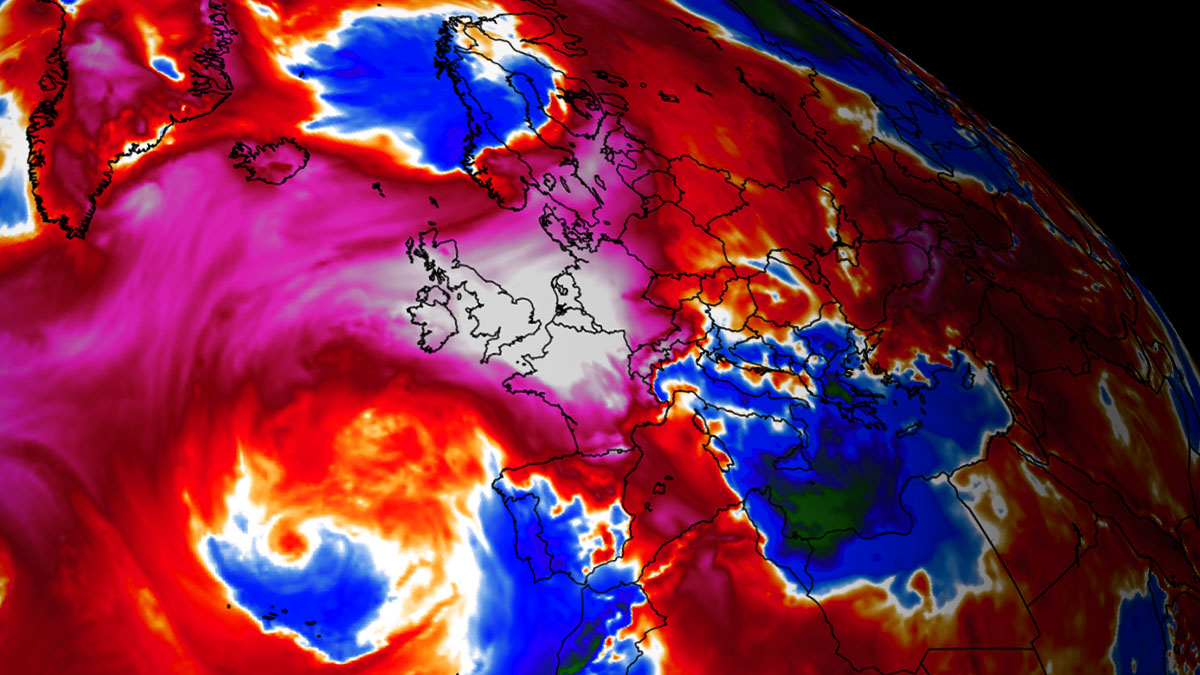
On Monday, temperatures have already reached +30 °C at London Heathrow Airport, UK, surpassing the forecasts. Peak temperatures in France have reached up to +39 °C, also higher than was anticipated by the weather models. They are indicating that the Heat Dome aloft is even stronger than forecasted.
The following days will bring additional scorching heat to France, as temperatures are forecasted to peak into the +36 to +40 °C range each day until the weekend. Up to +33 °C will likely be observed across southern England from Wednesday through Friday. These conditions will keep challenging September’s records, as note that meteorologically speaking, Europe is now in the first autumn season month. So, these forecast temperatures are extremely high for this period.
Below is a good overview of how intense the upcoming heatwave will be for Western Europe. The Meteogram chart represents the temperature in London, UK, for the next 14 days. It indicates temperature at the 850 mbar level (approximately 1250 meters above sea level) and precipitation.
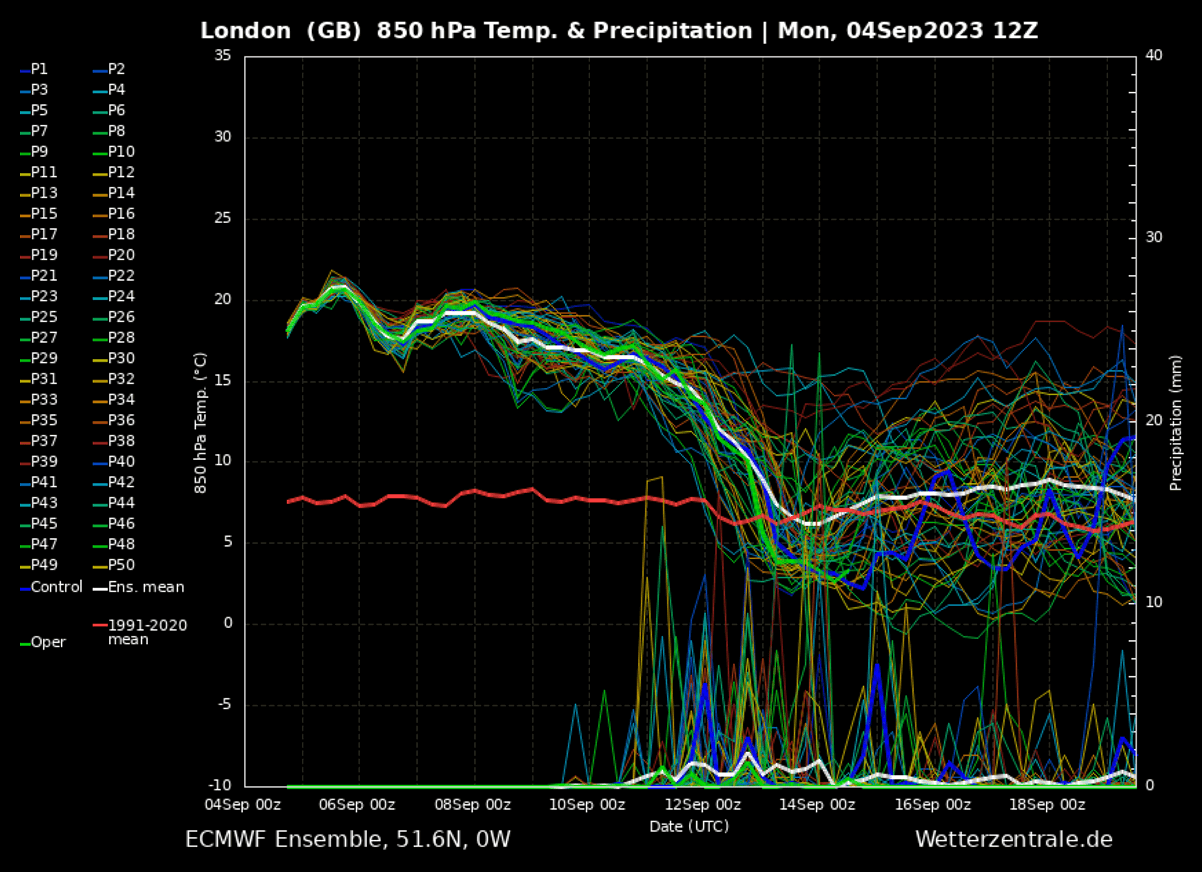
The long-term average temperature for the first half of September is around 7 °C for London at this level. As we see, the temperature will be significantly above normal throughout the whole week. Especially on Wednesday, when temperatures will be around 21 °C at this level, about 12-14 degrees C higher than normal.
This is a significant temperature anomaly for the UK and the rest of western Europe, including Ireland, France, and Benelux. A general rule of thumb translates these temperatures to the ground with roughly 12-14 °C higher values to get an idea of peak temperatures at the surface. So we can expect that peak daytime well above +30 °C.
The first week of September results in temperatures back into the low 30s for London and the rest of southern and southeastern England. This happens due to an unusually strong heatwave intensifying over western Europe, associated with the Omega Blocking High and Heat Dome in the upper levels.
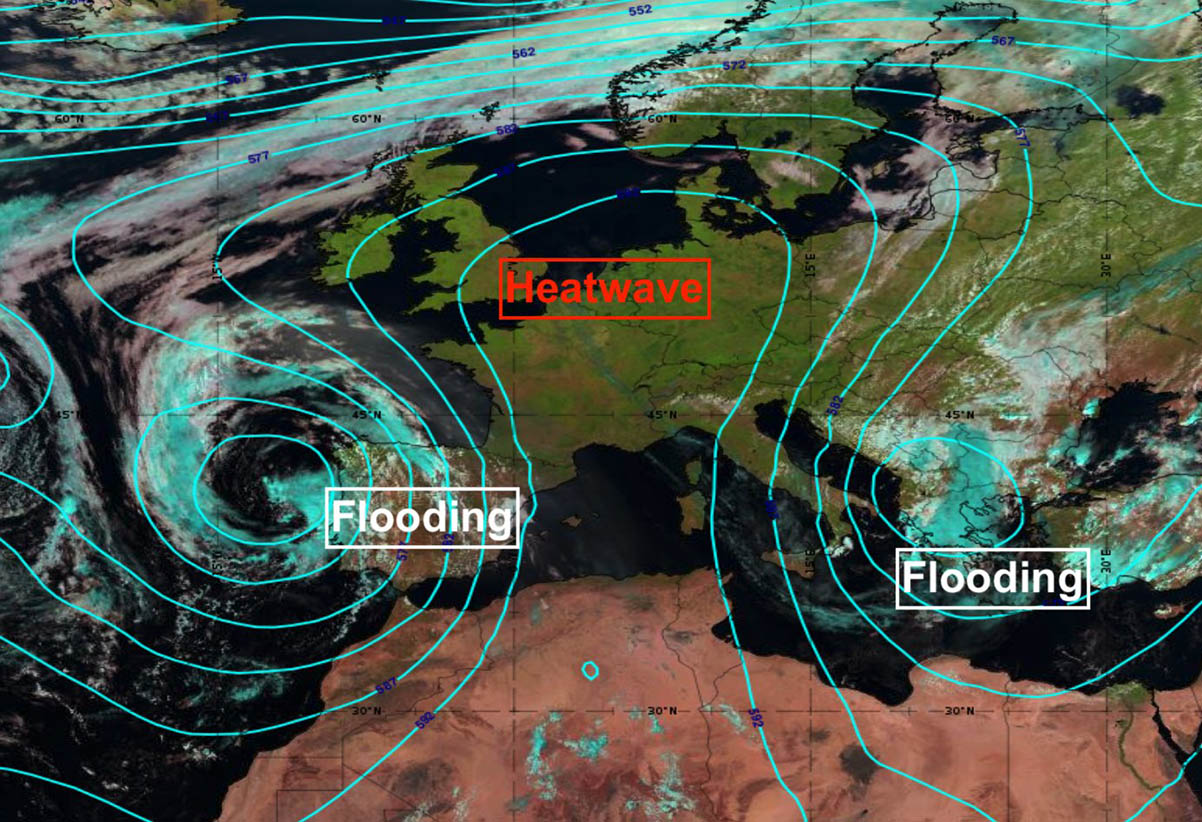
The above satellite image from Monday reveals an impressive pattern over Europe, with the Omega Block in the middle and two large and deep upper lows on each side. The western one caused major flooding in parts of Spain, while the eastern low is forecast to deliver a tremendous amount of rain and flooding to Greece.
With the strengthening ridge aloft, the heatwave first spread over France on Sunday and Monday, reaching the southern UK. Temperatures will continue rising as the heatwave expands across the UK, Ireland, Benelux, and the rest of western Europe until next weekend.
A much higher temperature is also forecast to develop over the continent’s central and northern parts, including Scandinavia, where daytime highs might also approach the +30 °C mark.
As mentioned above, a feature known as the Heat Dome is the reason behind this long period of stable weather that has been established. It intensifies heat waves underneath. This specific weather pattern often brings excessive heat and very high temperatures. Let’s talk about it first.
WHAT IS A HEAT DOME, AND WHY IT BRINGS EXTREME HEAT?
Let’s review the initial background cause that led to the development of major heatwaves worldwide. When significant heatwave events occurred in the past, in Europe, the United States, or Canada, the Heat Dome is that feature that brings it. Usually, the heat dome is the dominant feature of summer weather patterns on both continents.
We will use this term when extremely high temperatures develop; here is why.
The upper-level ridge pattern, or very warm air mass in the higher altitudes, which we also know as the Upper High (or blocking High), typically forms the heat dome. This specific weather pattern brings high and sometimes record-challenging temperatures for the region.
So, this specific term is used when a broad area of high-pressure parks over a large portion of the continent. Usually, it stays there for several consecutive days or even weeks if the event is particularly stable and extreme.
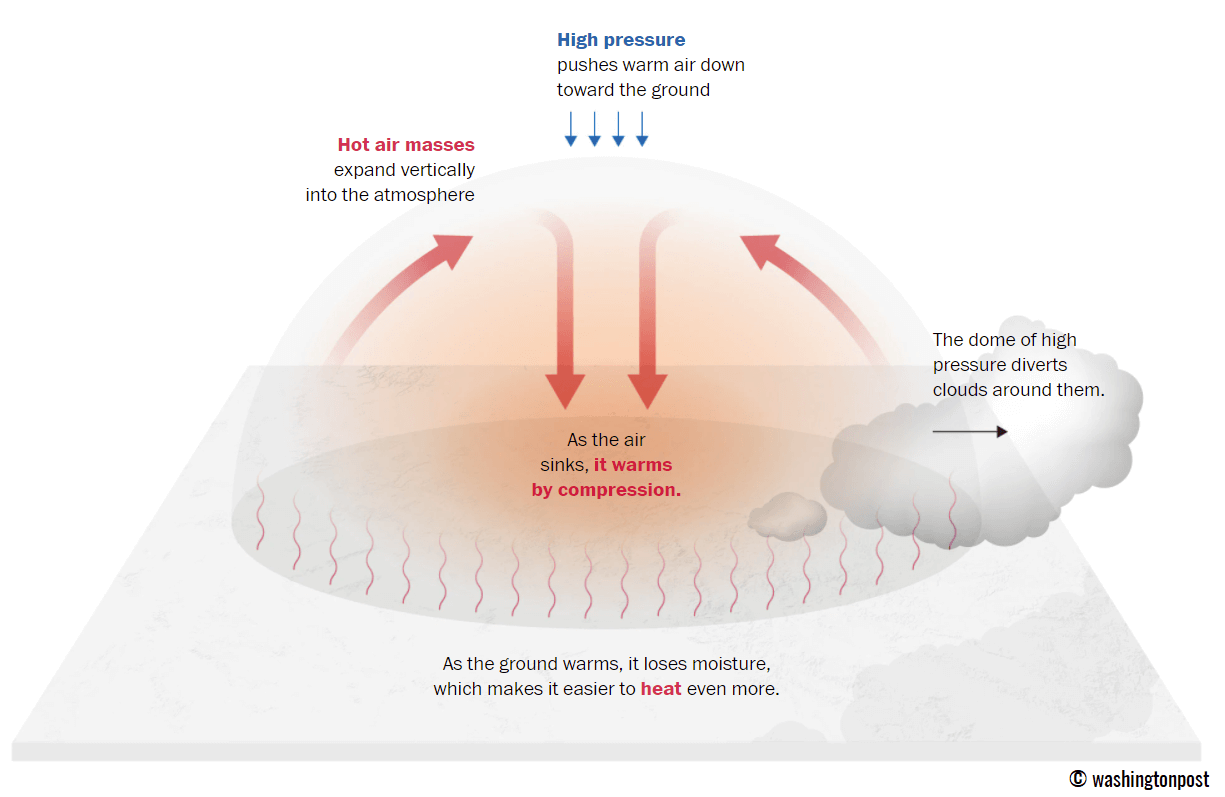
The heat dome works like a lid on a pot. The extensive dome of heat traps a warm air mass at all levels underneath, sinking layers toward the ground in its center. As a result, the air mass becomes anomalously warm at the lowest elevations and extremely hot near the surface.
Therefore, a heat wave, associated with a heat dome, creates stable weather and often arid air mass with minimal chances for precipitation or even clouds. This occurs as the sinking air parcels in the center of the heat dome lead to significantly rising temperatures towards the Earth’s surface. This is because the weather pattern develops a so-called Omega blocking High, which reminds us of a Greek alphabet letter.
The example below is this kind of Omega Block pattern developed this week over Europe. So, the omega-blocking pattern engulfs a large part of the continent, with the central parts leading to a heat dome and a low-pressure system on each side. In this week’s case below, one sits over the southern Mediterranean and the other between the Iberian peninsula and the Azores.

Much warmer and drier weather typically leads to a significantly enhanced wildfire threat. This is because extreme heat enhances a developing drought or worsens the ongoing, pre-existing, arid conditions. Such examples were wildfires in Europe and the Pacific Northwest in North America in recent years, especially in Greece this summer.
Heat dome is often also to blame for being responsible for deadly heatwaves and wildfires worldwide, as scorching and excessive heat lasts for a very long period of time. Remember that in 2023, such heat dome events brought record temperatures in Italy in July and scorching hot +45 °C in Spain and +50 °C in Turkey during August.
The daily average and maximum temperatures beneath the heat dome are typically significantly above average. When the dome is particularly strong, it challenges or breaks existing historical records, as we are expected to see this week. This becomes particularly striking when this feature develops in the early summer or autumn/fall.
STRONG HEATWAVES IN EUROPE THIS YEAR, ANOTHER ONE UNDERWAY THIS WEEK
This summer, there were several strong and record-breaking heatwave events in Europe, from Spain and Portugal to France, Italy, the Balkan peninsula with Greece and Turkey. Both July and August were significantly warmer than normal.
At the end of August, a weather pattern over Europe dramatically flipped with a bang as a deep upper-level wave grazed into the scorching heatwave. The following satellite image is from last week when the frontal system crossed the European continent from west to east.

Note the remarks on it for a better understanding. The system was centered over the northern Mediterranean and Italy, which saw extreme rainfall (300 to 400+ mm in a couple of days) thanks to high humidity and instability for heavy downpours fueled by a persistent marine heatwave over Liguria and the Adriatic Seas.
In the system’s wake, cold air mass spread, interacting with the extreme heat ahead of the main cold front. Heatwave was still parked over the Balkans. Strong winds dragged the Saharan desert sand/dust particles into the Mediterranean and Greece. There was also a widespread thick smoke cloud from the large wildfires in Canada a couple of weeks ago. Global patterns and associated winds have brought smoke clouds all the way to Europe.
On Monday, September 4th, an outstanding record-breaking day occurred in France. More than 200 monthly station records have been broken, with the highest temperature recorded in Le Blanc, which was +38.9 °C. Other notable records include +36.8 °C in Cognac, +36.4 °C in Bourges, and +34.5 °C Limoges.
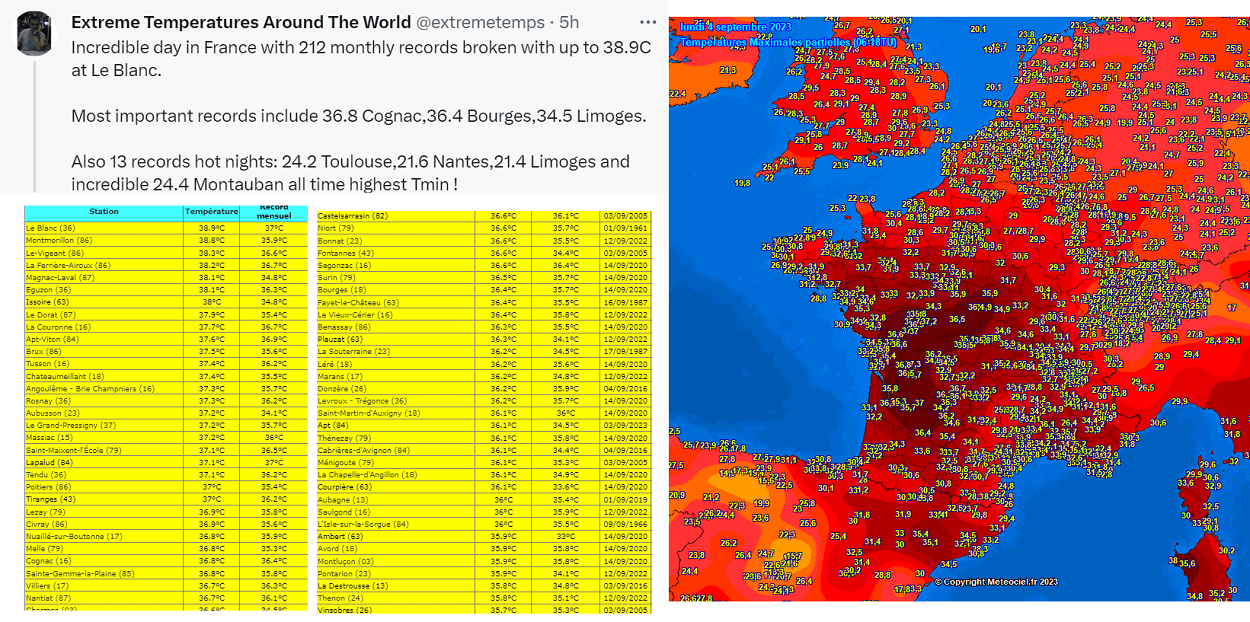
In addition, there were also 13 record hot nights with +24.2 °C in Toulouse, +21.6 °C in Nantes, +21.4 °C Limoges, and an incredible +24.4 °C in Montauban, smashing its all-time highest minimum temperature.
London Heathrow Airport, UK, reported +30.0 °C, with several other stations across southern England also peaking in the 28 to 30 °C range. On Monday, there was +27.6 °C at the Valentia Observatory in southwestern Ireland, +27.4 °C at the Shannon Airport, and +26.6 °C at Oak Park, Ireland.
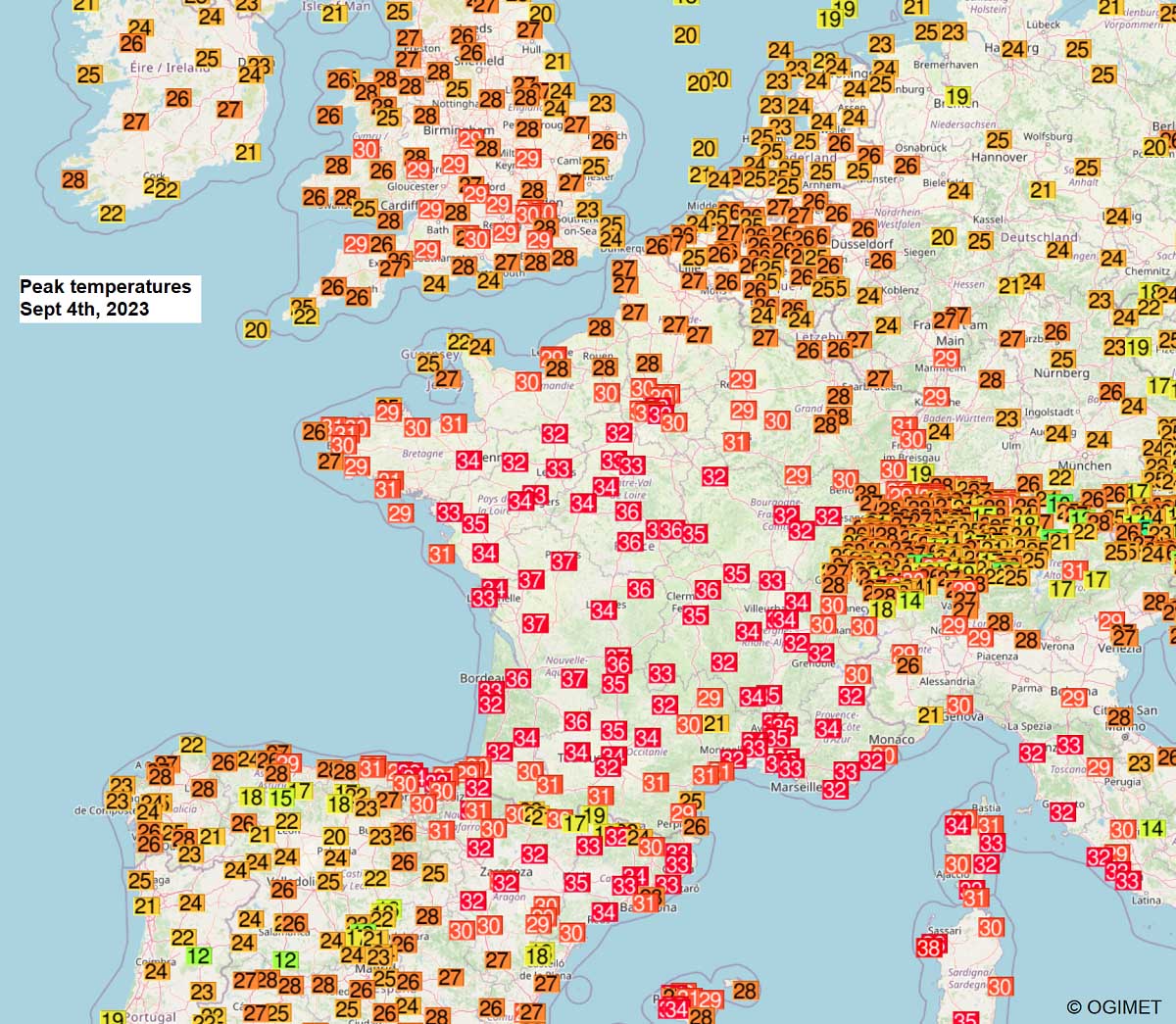
Spain reported an astonishing minimum temperature record of +25.2 °C from Lleida, setting its all-time high. Reus set its monthly high record with +34.3 °C in the afternoon.
Elevated stations in Switzerland have smashed several records, with +20.8 °C in Grimsel H (1980 m ASL), +21.4 °C Pilatus (2105 m ASL), a remarkable +18.8 °C at Weissfluhjoch (2691 m ASL) and +20.8 °C in Bernina (2260 m ASL).
Let’s now dig into this new, historic September heatwave we face this week.
OMEGA-BLOCKING PATTERN DEVELOPS OVER EUROPE, WITH DEEP LOW NEAR IBERIA INDUCING WARM PLUME OVER WESTERN EUROPE
This week, the general weather situation in Europe indicates a deep upper low that formed along the western portions of the Iberian peninsula and towards the Azores. Ahead of it on its east, an upper-level ridge rapidly strengthens, introducing a warm plume towards the north.
The ridge results in strongly anomalous heights, developing a long-lasting period of stable weather. This week’s pattern is a textbook Omega blocking High pattern over the European continent.
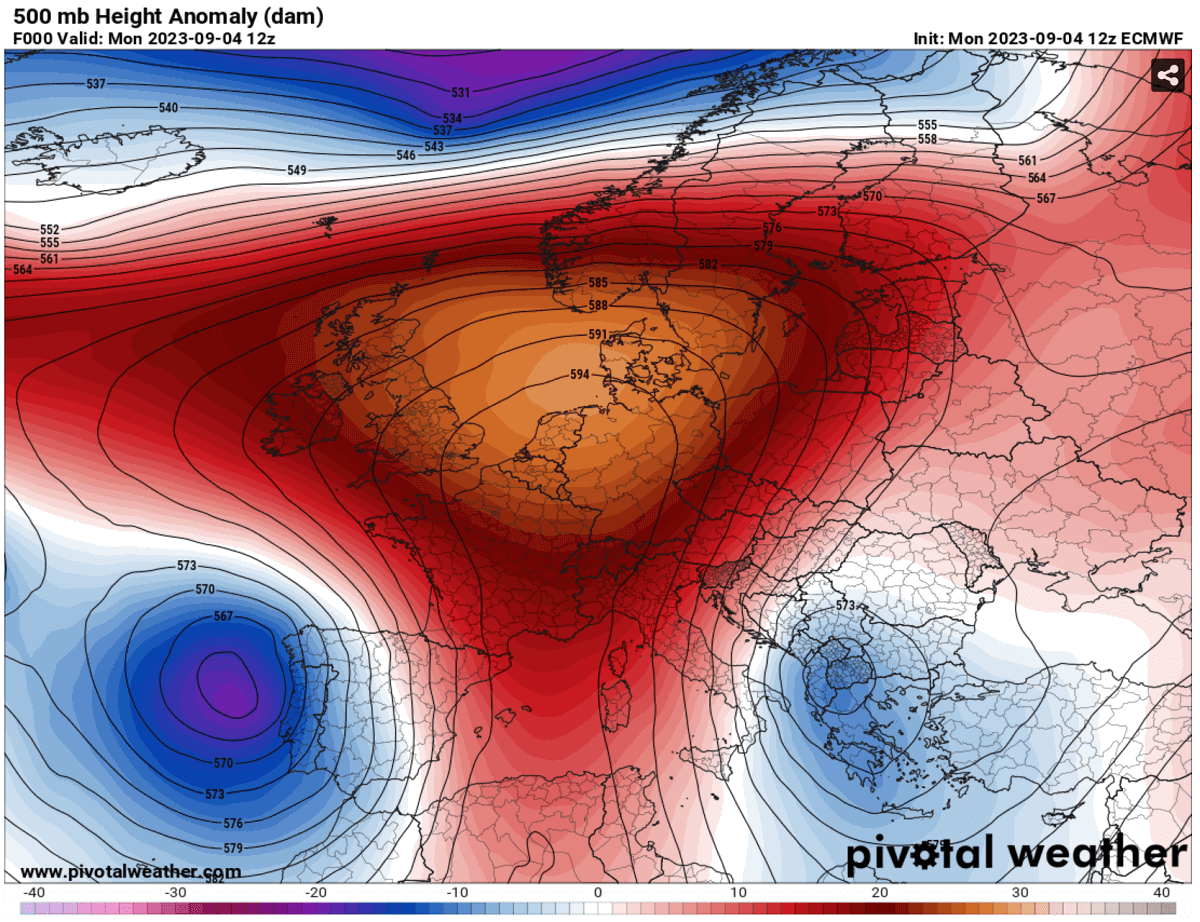
A south-southwesterly flow has established a significant warm plume between the deep Low and the strengthening High into Western Europe. Thus, a much warmer air mass will gradually spread north. Reaching into northern and central Europe towards the next weekend as well.
From Tuesday through Thursday, the extremely anomalous air mass will continue developing over France, Benelux, the UK, and Ireland. The warmest and most anomalous air mass is forecast to persist for multiple days until next weekend, when it will also gradually spread further north and east with time.
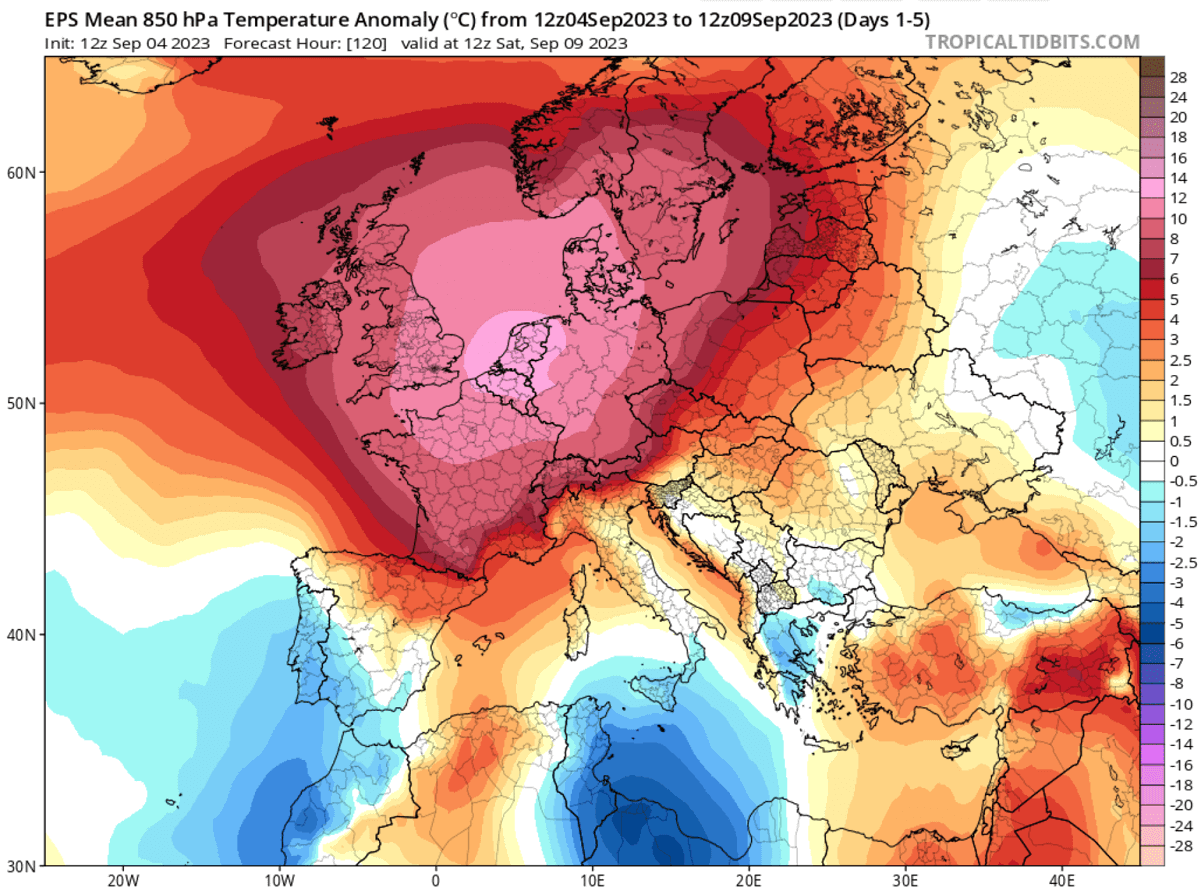
Through the following days, the heat dome and heatwave will continue strengthening, reaching the peak over western European countries. The highest temperatures are forecast over France, Benelux, the UK and Ireland.
The 500 mbar chart below represents the general weather picture on Thursday when a major Blocking High will dominate Europe, with its center over the North Sea and southern Scandinavia. Anomalies in the higher altitudes will be extreme.
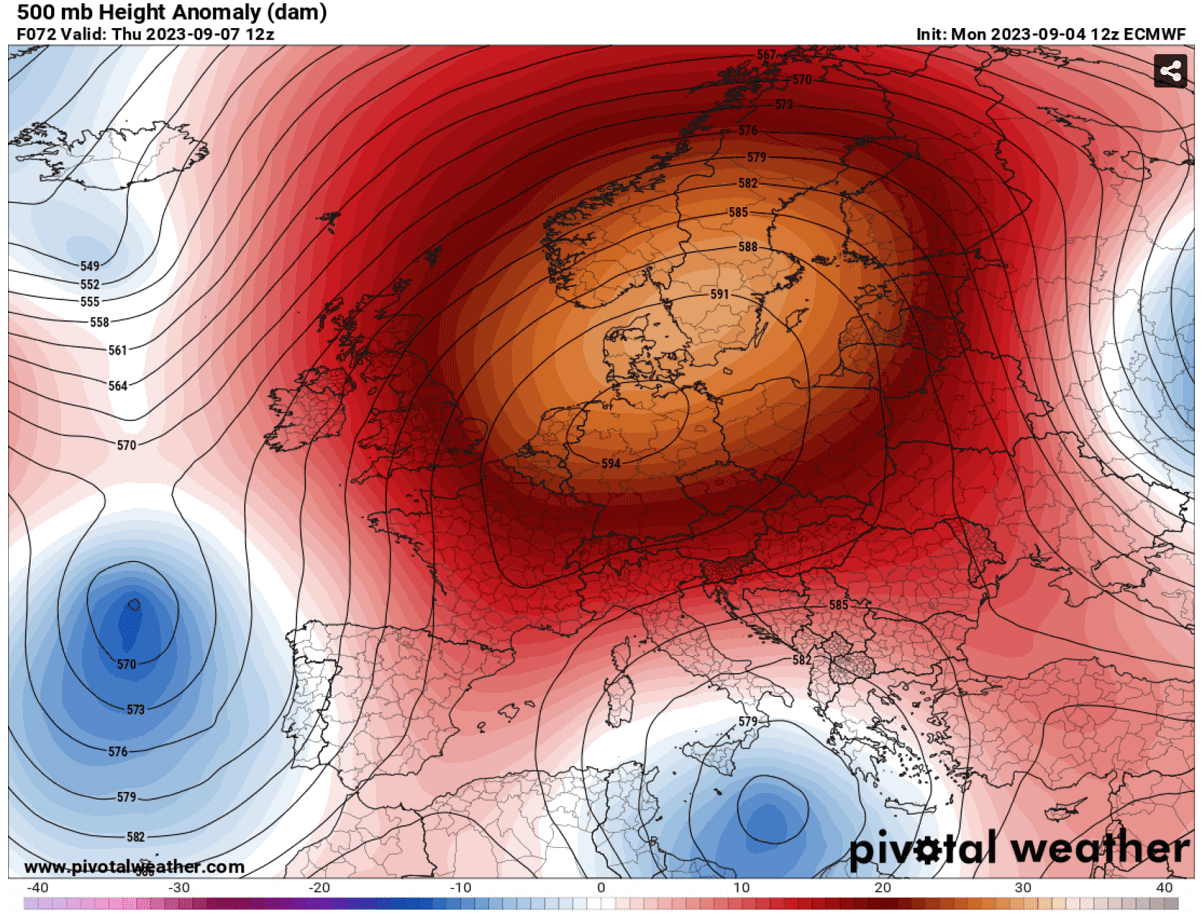
With time, this significantly anomalous air mass will continue and extend into the weekend, as much warmer weather is forecasted for Germany, Italy, the northern Mediterranean, and over a large part of Scandinavia. This will happen because of the very powerful heat dome established and expanding aloft.
This will result in temperatures significantly above normal for early September for most of Europe.
HEATWAVE INTENSIFYING OVER FRANCE, TEMPERATURE IS FORECAST TO REACH FROM +36 TO +40 °C WHOLE WEEK
With a warm plume strengthening the heat, the first regions affected are the southern portions of western Europe. On Tuesday, temperatures are forecast to climb back into the mid to upper 30s across the country, with peaks potentially reaching the 40 °C mark again in the following days.
Temperatures will also get much higher from Wednesday through Saturday for most of France, with 36-40 °C forecast in the peak afternoon hours.
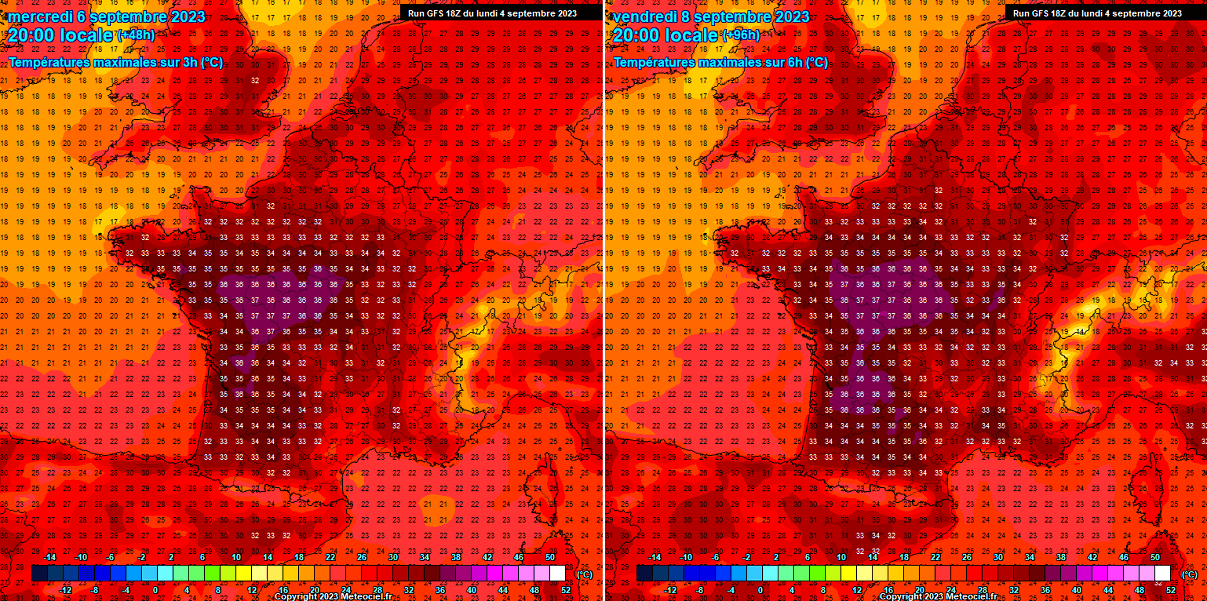
Almost all of France’s inland areas are forecast to experience temperatures well above 30 °C again this week, with only the coastal areas staying below this threshold. The heatwave started intensifying on Sunday and is expected to extend throughout the first week of September.
HEATWAVE EXPANDS INTO THE UK AND IRELAND, WITH PEAK TEMPERATURES INTO THE LOW 30S OVER SOUTHERN ENGLAND
As the upper High gradually expands north on Tuesday and Wednesday, this will allow temperatures to warm up significantly more across the UK and Ireland. On Tuesday, peak afternoon temperatures are forecast to reach the upper-20s over Ireland and around 30 °C across south-central England—mid-20s over Scotland and Wales.

With mid-levels becoming warmer after Wednesday, hot temperatures are forecast to overspread England. The maximum temperatures will likely reach around +32 °C across southern and southeastern England. This is extremely high for the month of September.
Temperatures over Ireland will also continue reaching the upper 20s from Wednesday through Saturday. Northern Ireland will reach mid-20s, similar to Scotland and Wales.
These above-normal high temperatures are expected to continue each day until Saturday as the heatwave persists until the next weekend.
EXTREME HEATWAVE FORECAST TO CONTINUE INTO THE NEXT WEEKEND, SPREADS INTO NORTHERN AND CENTRAL EUROPE
The chart below indicates the late this week’s mid-range trends. The general global weather model consensus agrees that the powerful heat dome will maintain the heatwave for the whole week, gradually engulfing far northern Europe over Scandinavia.
Temperatures at all levels are forecast to rise significantly and expand across most of Europe until the weekend.

In the second half of this week, a large heat dome will be centered over the northern half of the European continent. We can see that the blocking High will move over Denmark and southern Sweden for the weekend, persisting for several days and extending into early next week.
From Wednesday through Sunday, hot weather is forecast to return to Germany, with the highest temperatures reaching the low 30s across the country lowlands from Wednesday, with very warm temperatures for early September also gradually developing across central Europe and further east into the Czech Republic, Slovakia, and Poland.
This will also allow the Alpine region to push temperatures around 10-12 °C above normal; higher altitudes over the Alps and the Alpine valleys will further be extremely warm, challenging temperature records. Expect nighttime temperatures to be significantly higher than normal due to thick warmth into the mid-levels and more historical records to be broken.

The 2m temperature anomaly chart for Saturday above indicates how extremely anomalous the weekend is forecast. The heatwave will engulf Western, central, and northern Europe. Significant temperature anomalies are the most pronounced over France, the UK, Germany, Poland, Denmark, and southern Scandinavia.
Below is a Meteogram for Stockholm in southern Sweden, which reveals how rapid temperature increase is forecast after Monday. From the long-term average around 5 °C, it will push close to 18 °C, about 13 degrees above normal. With temporal relief on Wednesday, more extreme warmth will follow after Thursday for several days.
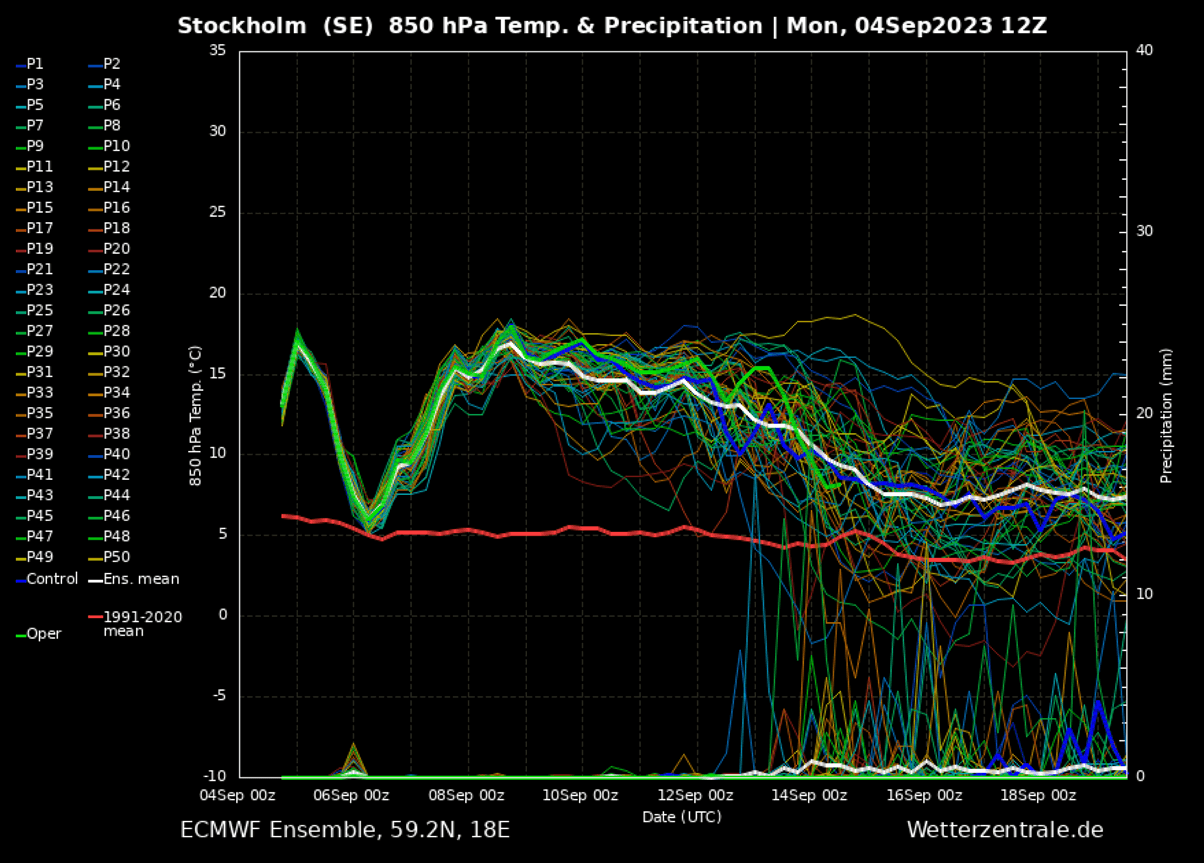
So, following into the weekend, extremely warm to nearly hot weather is forecast to spread into southern Scandinavia and Denmark. Peak afternoon temperatures from Thursday into Sunday are forecast to reach the mid-20s across south-central Norway and Sweden, including Finland. Baltic region countries as well, even surpassing the 25 °C mark.
Even higher temperatures are locally expected, especially across portions of southern Sweden, from Friday through Sunday. The peak afternoon temperatures could approach +30 °C or even break it, especially if some downslope dry winds develop into the valleys.

This is an astonishing high for September so far north in Europe. If these temperatures are verified, record-challenging maximum temperatures will likely occur in parts of Scandinavia.
HEATWAVE STRENGTHENS INTO ITALY AND THE BALKANS OVER THE WEEKEND AND NEXT WEEK
Once the heat dome peaks in the west, it will expand eastward in the late week. Thus, rising temperatures are also forecast across central Europe, the Mediterranean, and the Balkan peninsula. A heatwave will re-develop over these regions as well.
After Saturday, temperatures will climb back into the mid-30s over Italy and the Balkan peninsula countries, continuing over the weekend and extending into the next week.

Maximum temperatures are forecast to be the highest from Saturday through mid-next week for Italy and most Balkan peninsula countries, likely reaching around 35 °C from eastern Croatia, northern Bosnia and Herzegovina, Serbia, and Hungary. Peak temperatures over Italy next week will likely reach above +35 °C.
BEWARE OF HEALTH RISKS DURING A HEAT WAVE
During a long period of scorching hot weather, with temperatures surpassing +35 °C, it becomes physically challenging for the body and presents an enhanced risk for health.
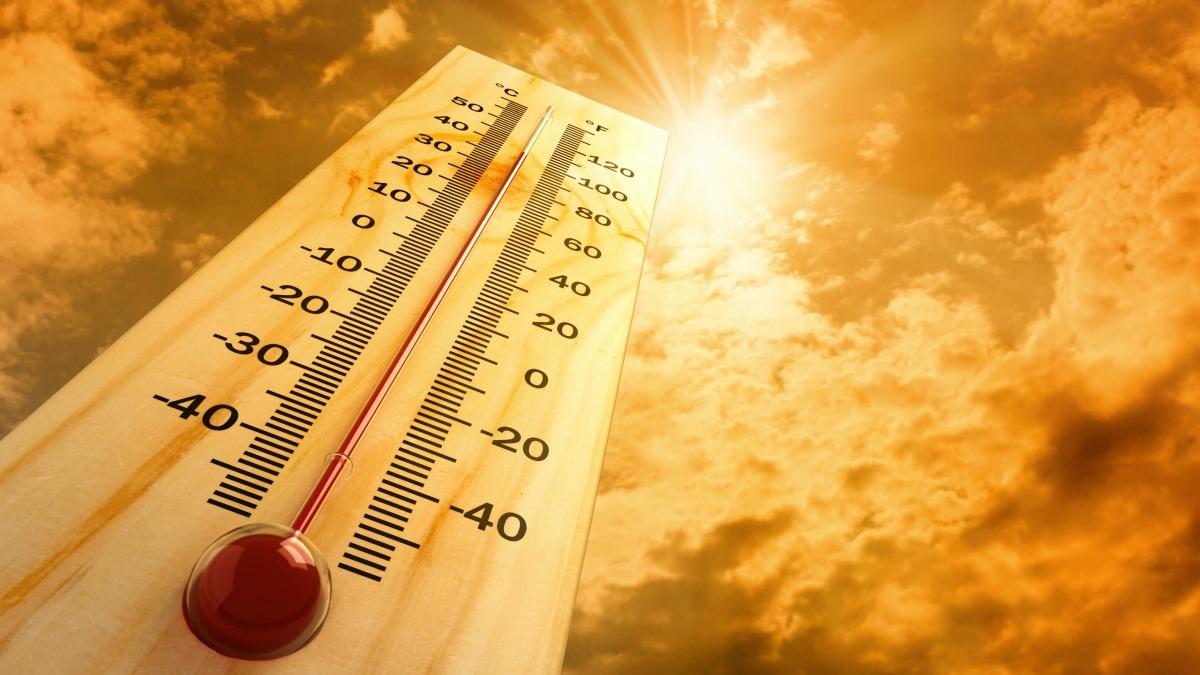
Sweltering hot weather, particularly in extended periods like heat waves, is uncomfortable and presents a significant health risk.
Who is most at risk?
Scorching hot weather is uncomfortable for most people. The following groups are particularly threatened by the very high temperatures we encounter during heat waves:
- elderly people aged over 75 years
- babies, young children
- people with chronic/long-term health conditions, such as diabetes, respiratory disease, circulatory disease
- People who are obese
- People taking certain medicines
- people who work outdoors, in hot/poorly ventilated areas, or engage in physical activity in hot weather
- socially isolated people
- people who are not acclimatized to hot weather, such as tourists from northern countries
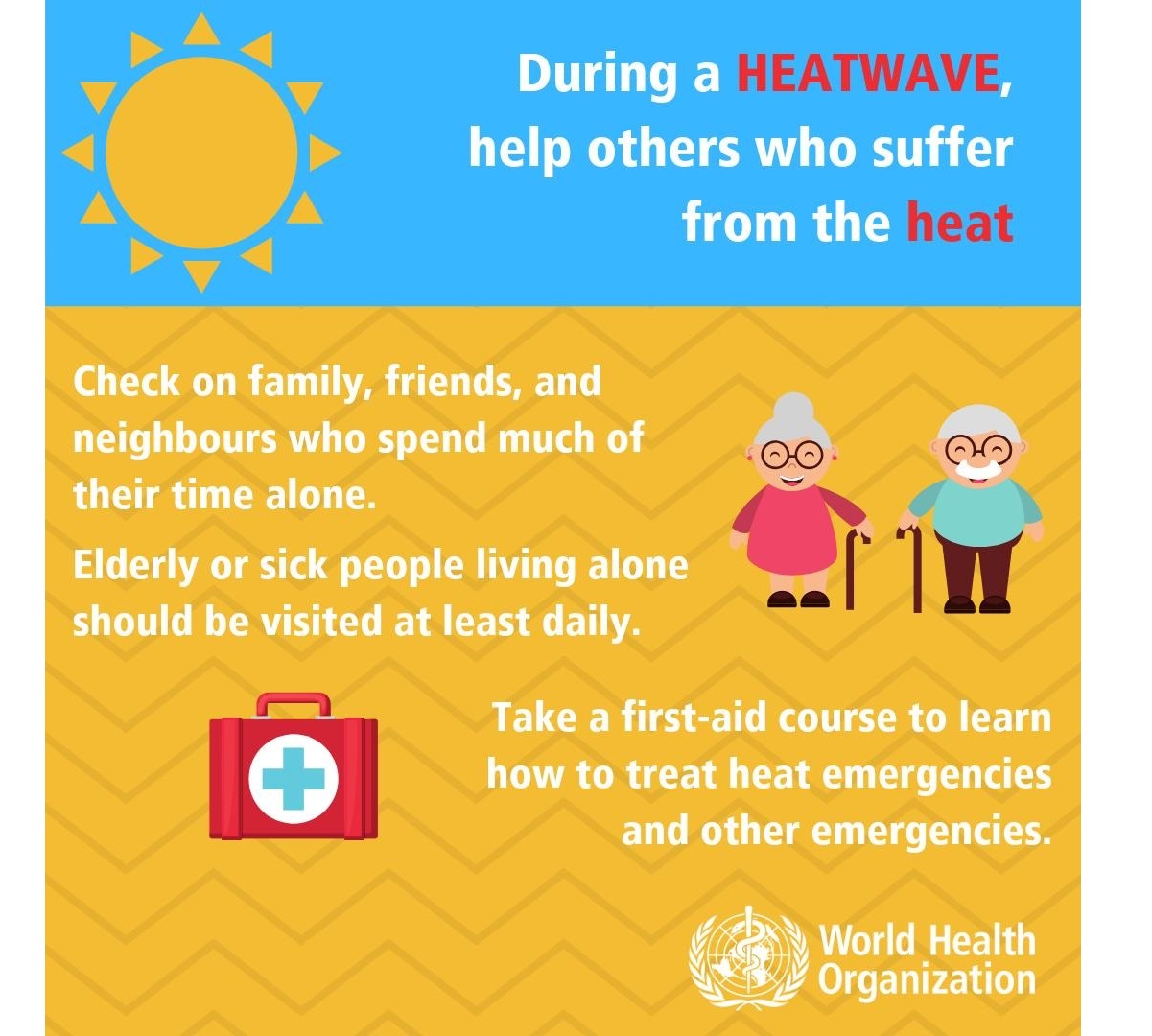
Always stay cool, hydrated, and healthy in scorching hot weather
Staying hydrated is one of the most important things during hot weather. Consider taking the following precautions and measures to stay healthy in scorching weather:
- Drink plenty of water! – A human’s body cools through sweating; on a sweltering hot day, an adult may lose up to several liters of water. Remember to keep drinking water, and avoid drinking alcohol, hot drinks, and drinks with high sugar content, as they can worsen dehydration. A regular intake of water is a good way of preventing dehydration.
- Keep your body cool; stay out of the sun if possible. Eat small meals, preferably fruit, and salads. Wear light-colored and loose clothing made from natural materials like cotton. Take a cool shower or a cold bath if you feel hot. Also, keep your workspace and living space cool. If you do not have air conditioning, shut the curtains and blinds during the day. Stay in the coolest room, and avoid using the stove and oven as much as possible. If your home gets too hot, go to a cooler place – a library, shopping center, cinema, or swimming pool.
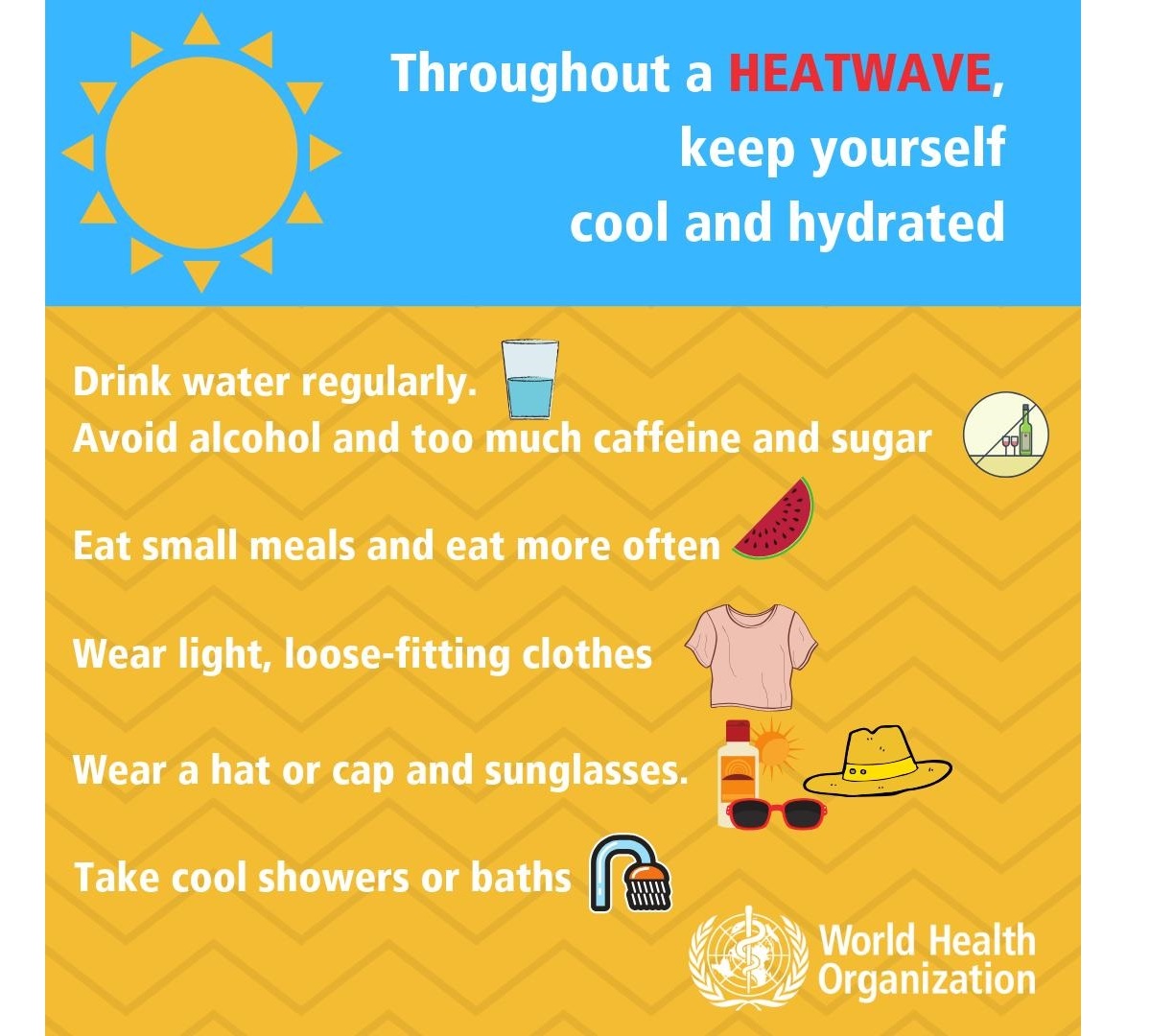
- Keep your food safe! – Always keep food that needs refrigeration adequately stored! Food spoils rapidly at higher temperatures, and you may risk food poisoning if the food is not stored correctly.
- If you need to go out in the sun – protect your skin and use proper sunscreen and clothing to avoid sunburns. Cover your head correctly.
- Know your body and have a plan – Ask your doctor if you have any health conditions that may increase the risk of heat-related illness. Call and consult with your doctor if you are feeling unwell. Call emergency help (know the number!) if you feel unwell!
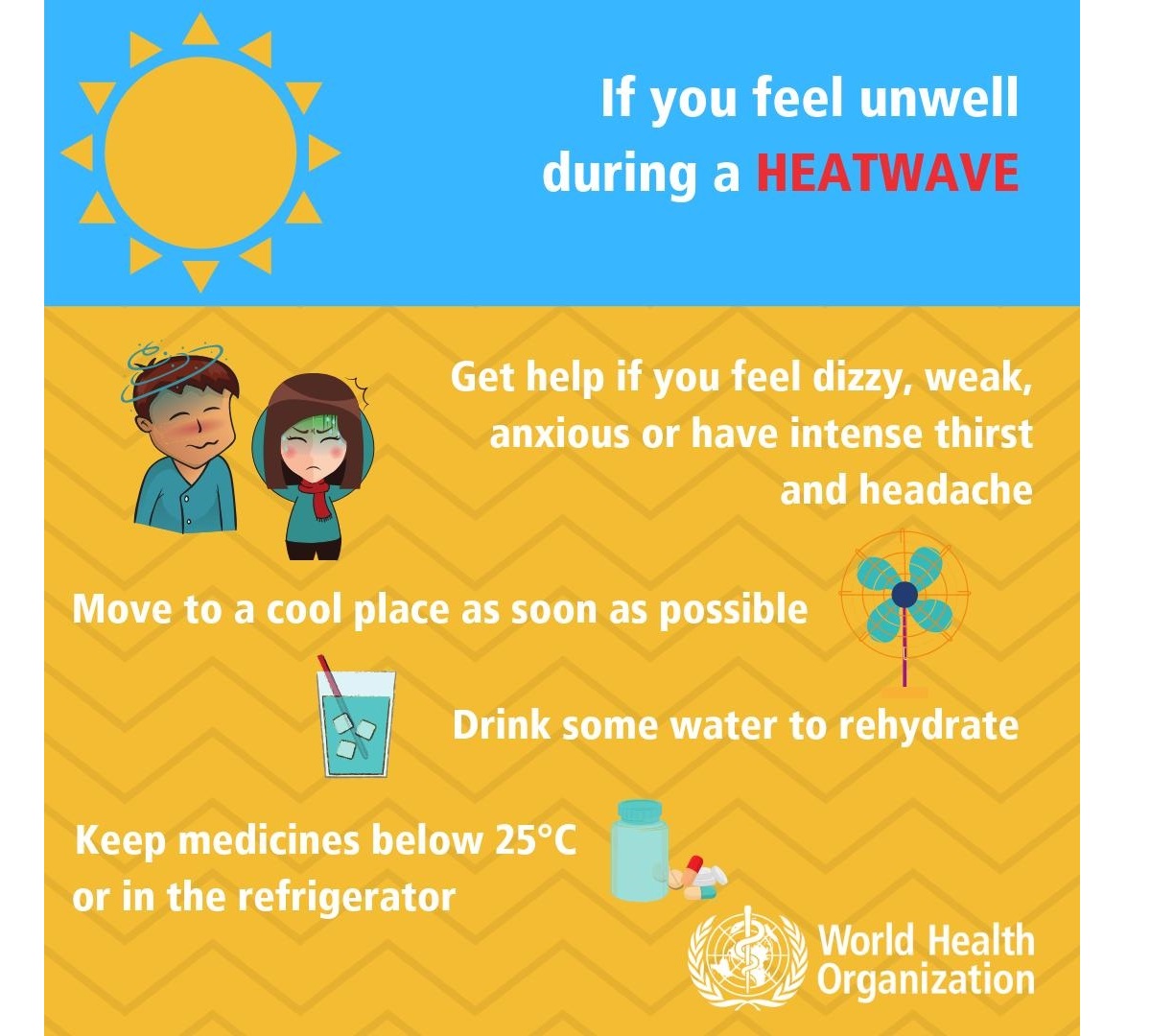
Common heat-related illnesses with symptoms: What to do if it happens?
WHO considers these symptoms’ descriptions and treatments below as informative only – consult with your doctor for details and professional advice:
Dehydration
Dehydration occurs when the body loses too much water to maintain normal functions. Symptoms include dizziness, tiredness, irritability, thirst, dark yellow urine, loss of appetite, and fainting. Drink plenty of water or diluted fruit juice. Avoid alcohol, coffee, and sugary drinks. Move to a cooler space to cool off. If you feel unwell, call your doctor or emergency room.
Heat rash
Heat rash is an itchy rash caused by excessive sweating. Move to a cooler, dryer environment, and keep the affected areas dry. Hydrating creams may make the condition worse. Consult with your doctor.
Heat cramps
This happens during strenuous activity when the body sweats and loses water and salt. Heat cramps manifest as muscle pains or spasms. If this happens, stop all activity, move/lie down in a cool place, and raise your legs slightly. Drink water or diluted juice. Have a cool shower or bath, and apply ice packs. Refrain from returning to strenuous activity for several hours. If heat cramps do not subside, seek medical help.
Heat exhaustion
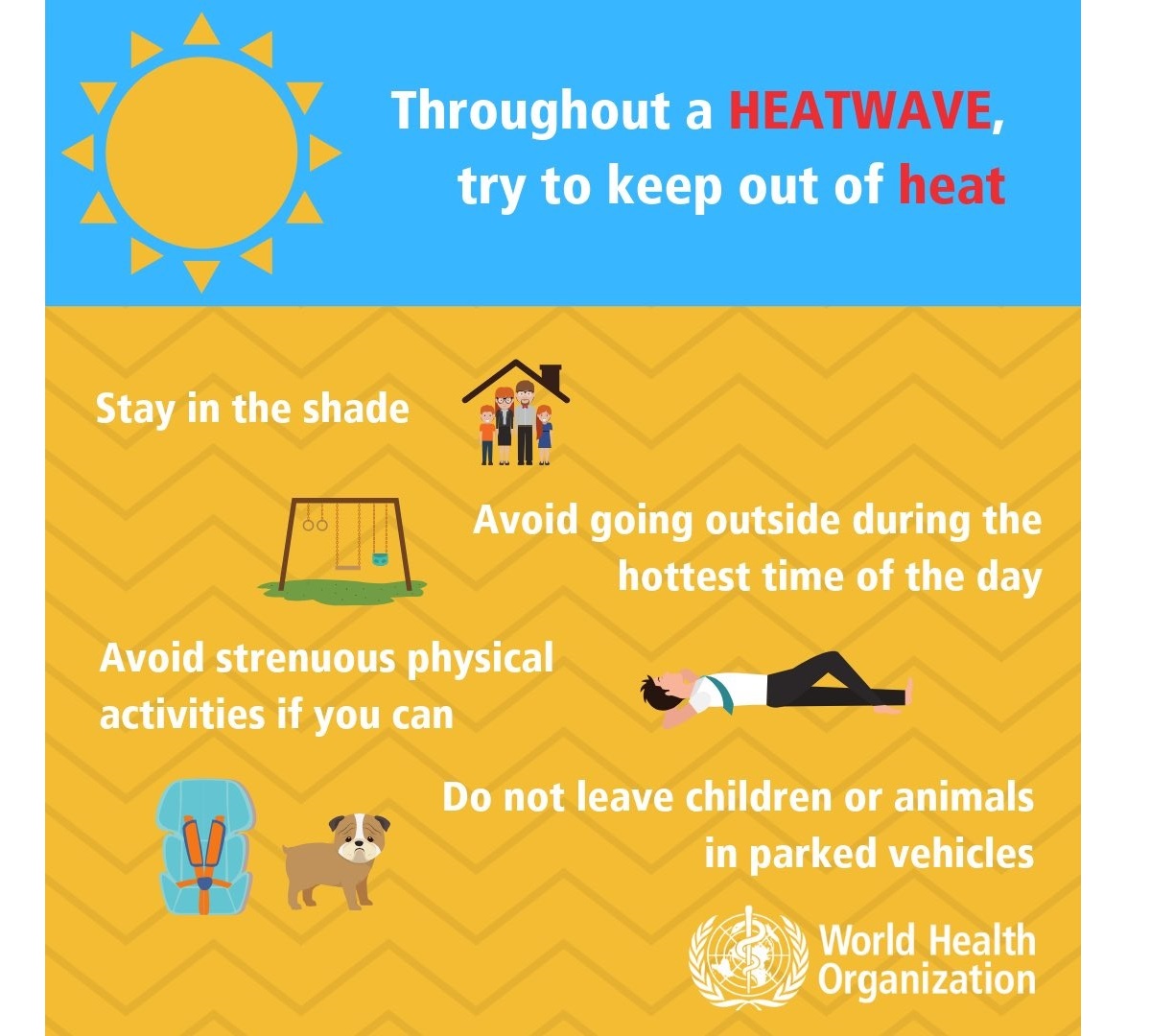
Heat exhaustion is the condition in response to losing excessive amounts of water and salt due to dehydration. Symptoms include heavy sweating, pale skin, fast and weak pulse, fast and shallow breathing, muscle weakness or cramps, tiredness and weakness, dizziness, headache, nausea or vomiting, and fainting.
If heat exhaustion occurs, the body needs to be cooled and rehydrated by moving to a chilled place, lying down, having a cool shower or bath, and placing cool packs under the armpits, groin, or back of the neck. Rehydration should be done by taking small amounts of cool fluids. Medical help is advised if symptoms do not abate within an hour.
Heat stroke
Heat stroke happens when the body temperature reaches 40.5 °C, a severe and life-threatening condition! Immediate first aid in lowering body temperature is critical, and an immediate call for an ambulance! Find more information on heatstroke here.
High relative humidity during a scorching heatwave can also significantly affect the body, as it becomes physically challenging for those working outside. After high rainfall events, strong heating will help evaporate the soaked grounds, resulting in higher humidity than normal as well.
We use a Heat Index chart to represent the real feel of extremely high temperatures and high humidity. These graphics indicate what is the real feel of temperatures based on what the temperature and humidity are.

As we see, when air mass has a temperature around +35 °C, humidity below 60 % is much less challenging than once the humidity is very high, e.g., above 80 percent. Thus, the real feel temperature would be near 50 degrees Celsius, which is extreme.
With even higher temperatures, when the airmass warms to near the 40s, such sweltering hot air becomes hard to handle with even lower humidity, 50 to 60 percent.
Stay safe!
Wxcharts, Pivotalweather, and Meteociel provided images used in this article.
See also: